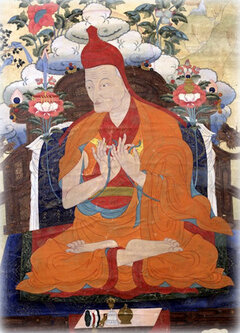Damngak Dzö Series
English (22) | Deutsch (5) | Español (11) | Français (12) | Italiano (2) | Português (3) | 中文 (1) | བོད་ཡིག (22)
Texts belonging to (and related to) the Damgnak Dzö (gdams ngag mdzod) or Treasury of Instructions, one of the five treasuries of Jamgön Kongtrul Lodrö Thayé (1813–1899):
Kadam
Marpa Kagyü
by
Pema Karpo
by
Tilopa
Miscellaneous
recalled by Thangtong Gyalpo
Nyingma
Sakya Lamdré
spoken by Mañjuśrī to Sachen Kunga Nyingpo
